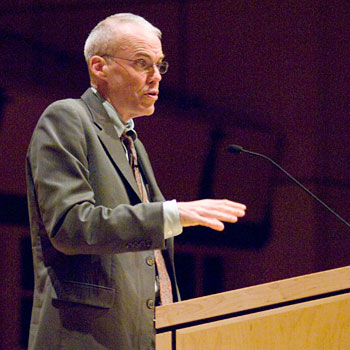| FACT |
FRAUD |
| U.S. Agency for International Development | American Petroleum Institute |
United States Department of Agriculture |
US Chamber of Commerce |
| National Oceanic & Atmospheric Administration | National Association of Manufacturers |
National Institute of Standards and Technology |
Competitive Enterprise Institute |
| United States Department of Defense | Industrial Minerals Association |
United States Department of Energy |
National Cattlemen’s Beef Association |
| National Institutes of Health | Great Northern Project Development |
United States Department of State |
Rosebud Mining |
| United States Department of Transportation | Massey Energy |
U.S. Geological Survey |
Alpha Natural Resources |
| U.S. Environmental Protection Agency | Southeastern Legal Foundation |
University Corporation for Atmospheric Research |
Georgia Agribusiness Council |
| National Center for Atmospheric Research | Georgia Motor Trucking Association |
National Aeronautics & Space Administration |
Corn Refiners Association |
| National Science Foundation | National Association of Home Builders |
Smithsonian Institution |
National Oilseed Processors Association |
| International Arctic Science Committee | National Petrochemical and Refiners Association |
Arctic Council |
Western States Petroleum Association |
| African Academy of Sciences | |
Australian Academy of Sciences | |
| Royal Flemish Academy of Belgium for Sciences and the Arts | |
Academia Brasileira de Ciéncias | |
| Cameroon Academy of Sciences | |
Royal Society of Canada | |
| Caribbean Academy of Sciences | |
Chinese Academy of Sciences | |
| Académie des Sciences, France | |
Ghana Academy of Arts and Sciences | |
| Deutsche Akademie der Naturforscher Leopoldina of Germany | |
Indonesian Academy of Sciences | |
| Royal Irish Academy | |
Accademia nazionale delle scienze of Italy | |
| Indian National Science Academy | |
Science Council of Japan | |
| Kenya National Academy of Sciences | |
Madagascar’s National Academy of Arts, Letters and Sciences | |
| Academy of Sciences Malaysia | |
Academia Mexicana de Ciencias | |
| Nigerian Academy of Sciences | |
Royal Society of New Zealand | |
| Polish Academy of Sciences | |
Russian Academy of Sciences | |
| l’Académie des Sciences et Techniques du Sénégal | |
Academy of Science of South Africa | |
| Sudan Academy of Sciences | |
Royal Swedish Academy of Sciences | |
| Tanzania Academy of Sciences | |
Turkish Academy of Sciences | |
| Uganda National Academy of Sciences | |
The Royal Society of the United Kingdom | |
| National Academy of Sciences, United States | |
Zambia Academy of Sciences | |
| Zimbabwe Academy of Science | |
American Academy of Pediatrics | |
| American Association for the Advancement of Science | |
American Association of Wildlife Veterinarians | |
| American Astronomical Society | |
American Chemical Society | |
| American College of Preventive Medicine | |
American Geophysical Union | |
| American Institute of Physics | |
American Medical Association | |
| American Meteorological Society | |
American Physical Society | |
| American Public Health Association | |
American Quaternary Association | |
| American Institute of Biological Sciences | |
American Society of Agronomy | |
| American Society for Microbiology | |
American Society of Plant Biologists | |
| American Statistical Association | |
Association of Ecosystem Research Centers | |
| Botanical Society of America | |
Crop Science Society of America | |
| Ecological Society of America | |
Federation of American Scientists | |
| Geological Society of America | |
National Association of Geoscience Teachers | |
| Natural Science Collections Alliance | |
Organization of Biological Field Stations | |
| Society of American Foresters | |
Society for Industrial and Applied Mathematics | |
| Society of Systematic Biologists | |
Soil Science Society of America | |
| Australian Coral Reef Society | |
Australian Medical Association | |
| Australian Meteorological and Oceanographic Society | |
Engineers Australia | |
| Federation of Australian Scientific and Technological Societies | |
Geological Society of Australia | |
| British Antarctic Survey | |
Institute of Biology, UK | |
| Royal Meteorological Society, UK | |
Canadian Foundation for Climate and Atmospheric Sciences | |
| Canadian Meteorological and Oceanographic Society | |
European Federation of Geologists | |
| European Geosciences Union | |
European Physical Society | |
| European Science Foundation | |
International Association for Great Lakes Research | |
| International Union for Quaternary Research | |
International Union of Geodesy and Geophysics | |
| Intergovernmental Panel on Climate Change | |
World Federation of Public Health Associations | |
| World Health Organization | |
World Meteorological Organization | |









